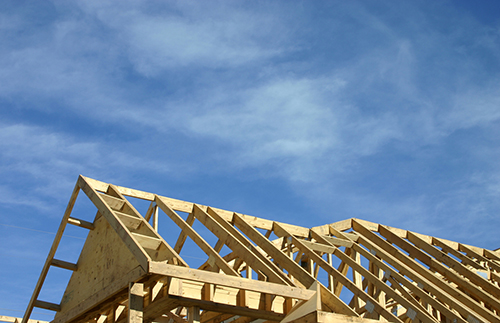
Slate Roof Design & Installation For Architects

North Country Slate products are drawn from the finest quarries in the world, and meet the most rigorous European and North American standards. Available in a wide variety of colors, textures and sizes, they are ideal in virtually any application where quality, durability and aesthetic appeal are important issues.
As an architect, using this remarkable material, to best advantage is equally important. As with any high-quality material there are opportunities and challenges regarding natural slate that are best optimized by understanding – before the project is underway.
AN ARCHITECT’S DREAM.
Available in a range of sizes and thicknesses, the application options of slate are as unlimited as your imagination. It can be specified in single-size, random-width or graduated; and it can be utilized in innovative designs to create multicolored, patterned, custom-cut and heavy slate roofs.
There are several widely circulated publications on the design and application of slate roofs: National Slate Association (NSA) Slate Roofs: Design and Installation Manual 2010 Edition, The Slate Book, The Slate Roof Bible, National Slate Association (NSA) Slate Roofs: 1926 Edition, NRCA’s Steep Slope Roofs Manual and ASTM C406 Standard Specification for Roofing Slate. All of these publications are available from North Country Slate. Rather than duplicate information available in these resources, this Architect’s Guide is intended to further inform architects on practical issues related to the specification of natural slate roofing.
There are a few pitfalls you can avoid in working with slate, by considering the following:
Restoration:
- What color(s) is the original slate, including weathering characteristics?
- What is the face dimension size and thickness?
- Are the slates single-size, random-width or graduated?
- What are the details of the hip, ridge and valley treatments?
- What are the details of any specially trimmed slates or color pattern?
- Was the original slate installed on a solid roof deck or on battens?
- What are the quality expectations regarding the slate delivery and supply, and when, where and how will they be met?
- What will be the process for approving a product as “equal”?
New Project:
- What color(s) will best suit the building’s architecture and its surrounding environment?
- What weathering characteristics are most appropriate? (e.g. unfading, semi-weathering or weathering.)
- What dimensions and thickness best suit the building?
- Is a smooth or textured appearance most appropriate?
- Are winds, wind driven rain, hail or severe snow-loading expected?
- What are the quality expectations regarding the slate delivery and supply, and when, where and how will they be met?
- From what quarry or distributor is this quality, quantity and color of slate available?
- Note: Qualified roofing contractors are available, but you may have to look hard and verify their credentials. Research quoted prices to ensure reliable supply, installation, after-sales service and warranty. In many cases, the lowest bid may not be the prudent choice.
BUILDING ON YOUR VISION.
Once construction goes ahead, you want to make sure that the reality lives up to your vision. That’s why, as an architect, there are a few things you should monitor as the job begins, and throughout the installation.
- Ensure that the installed headlap is the one specified, and that non-corroding fasteners are used.
- Ensure that the slates have not been drawn too tight to the roof by nailing.
- If specified, confirm a 1/8″ (approximate) joint space between slates in the same course.
- Make sure the contractor skillfully blends the slates from a number of crates into the roof to compensate for natural variations in color.
- If specified, where a smooth overall appearance is desirable, ensure that slates are graded into three thickness groups and then applied with the thicker slates at the eaves and thinner slates at the ridge.
THE BEST CLIENT IS A HAPPY CLIENT.

Slate has remarkable characteristics and once it is in place it radiates grandeur, imbuing any building with an aura of timeless beauty. It is critical that both the builder and the owner see in the finished product, what they imagined at the outset. For that reason, they need to be educated throughout the process, so that everybody is reading from the same page.
While ASTM C-406 Standard Specification for Roofing Slate is a helpful guideline to the suitability of natural slate as a roofing material, it does not ensure the architect, roofing contractor or building owner a sound and aesthetically appealing roof. All parties should be aware of material or delivery shortcomings not addressed by ASTM testing. For example, ASTM does not clearly address the color characteristics of natural slate.
To ensure the desired roof appearance over time, specifications for slate should include the color change characteristics as; unfading, semi-weathering or weathering. These color-weathering characteristics should be clearly understood by all parties involved in the selection and supply of roofing slate.
Specifications for unfading slate should require certification from the supplier that the slates shall contain no visible inclusions of oxidizable iron pyrite. Substantial inclusions of iron pyrite which oxidizes when exposed to the weather, leads to undesirable rust streaking of the roof. The specification of “ASTM S-1” or “Unfading” slates alone is not enough, as many of these offending slates are currently promoted and sold as unfading and may meet ASTM requirements as an S-1 slate.
The recent increase in demand for natural roofing slate has led to an influx of imported slates from newly discovered quarries in Europe, Asia, South America, Africa and India. Due to the current “cottage industry” status of some of the producers, many of these slates are of very poor quality by North American Standards, and their limited production capabilities can make delivery unreliable on larger projects. Again, although ASTM compliance may be claimed, caution should be exercised when considering slates from unproved sources, and warranties regarding breakage, durability and color characteristics should be specific.
Every natural slate roof is unique in some way. It is important for the building owner, architect, general contractor, roofing contractor and slate supplier to agree (before the slate is ordered) on all aspects of the supply and installation. The appearance of a slate roof can change dramatically with color/texture variations in the slate, and with the installation practices employed by the installer.
NORTH COUNTRY SLATE. BRINGING YOUR VISION TO LIFE.
At North Country Slate, we are not simply in the business of offering the best slate products available anywhere. We are in the business of supporting you, our client, in every way possible. We have the technical expertise to assist you in the design phase, in avoiding potential pitfalls during installation and in communicating effectively with the builder and owner.
Please feel free to draw upon our very extensive expertise when you are considering using slate on your project. We have plenty of ideas to offer- and some sage advice on effective trouble-shooting during the entire life-cycle of the project.
Contact us today and let us help bring your vision to life.
